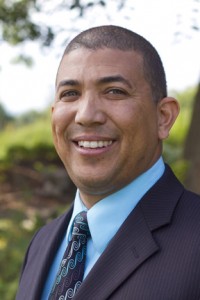Luke A. Hartman is Vice President for Enrollment at Eastern Mennonite University, and a member of the Communities of Hope Team for Mennonite Church USA. In August 2012 he presented a paper at the Mennonite Higher Education Faculty Conference titled, Why ‘diversity’ is not a choice but a gift and responsibility of faithful living as Christians. His paper remains relevant for Mennonite institutions and congregations, especially as trainings on intercultural competency are happening across the country. Due to length, his paper is presented as a three-part series. This is part three. Part one and part two ran earlier this week.
What does faithful living look like in an institution that participates in a capitalistic endeavor? I think it means investigating our institutional policies that may perpetuate power and privilege in an unintended manner. It also means naming the invisible barriers which may limit accessibly for students who are other-cultured.

“Mennonite affirmative action” is a term I often use when participating in the awarding of scholarships at our Mennonite colleges and universities. Roughly twelve years ago I read an article in the New York Times that listed academic success by denomination. Mennonites were ranked in the top five.
In other words, Mennonite students overall do very well academically in higher education and are a safe student to recruit. At one Mennonite institution the average retention rate of a cohort of Mennonite students entering the fourth fall semester since the year 2000 was 78.5%, while 47.8% of students who did not come from a Mennonite background were retained.
The disparity in retention rate between Mennonite students and those who are not Mennonite is glaring and speaks to a serious incongruous cultural dilemma. There is also a connection between dominance and sub-ordinance when it comes to retention.
Returning to the topic of accessibility, Mennonite students who are predominantly white receive the majority of institutional merit scholarships. On top of merit institutional aid, if a student is a member of a Mennonite church he or she usually receives a match of institutional funds. Stacked upon that, if a student attends the university as a “legacy” student, meaning a parent attended the predominantly white Mennonite college or university, then there is additional institutional aid provided. Finally, our very best students who are often Mennonite receive endowed scholarships on top of all the previous listed funds.
What one must remember is that every time a Mennonite student receives additional institutional resources it takes away from the very same pool used to support diversity efforts. I have found that many Mennonite parishioners speak boldly about social justice until it impacts their wallet.
Many Mennonite families opt to send their own child to a local state school when the institutional aid is not provided at a disproportionately favorable level, regardless of one’s income level.
In my sixteen years as both an undergraduate and graduate faculty member I observed that faculties tended to be more supportive of diversity initiatives to the extent that diverse students did not create additional workload or require additional time and energy. After all, we as faculty enter the academy in part, for the rewards of time and freedom.
When focusing specifically on admissions criteria and the work of admissions committees the question I often wonder is, “If the academic criterion for other-cultured individuals is the same as for all students, without taking culture into consideration, are non-cognitive factors being considered?” Are resources invested in preparatory summer academies for underprepared students? And are diverse student unions and clubs supported for cultural respite?
The role of the institution, when living out responsibly the Christian life, is to commit to developing inclusive communities and placing diversity more closely to the overall mission of the institution. It means moving forward with serious inquiry like we do with so many other endeavors.
We must conduct introspective analysis of the institution. We must incorporate a diversity plan that becomes systemic and transformational. So often we settle for projects, special programs, short-term initiatives, and other efforts that are not sustainable and are difficult to evaluate.[1]
Conclusion
As a former student of color, faculty of color, and administrator of color at predominantly white Mennonite campuses, my experiences of inclusivity did not come from a project, or program, or diversity initiative. It came from professors who understood the true meaning of Educare: To bring out that which is from within.
The legendary psychology and education professors Judy Mullet and Jean Roth Hawk became my white allies, seeing me as a student who brought a unique experience and perspective that could enrich the teaching and learning process. When I experienced constructive criticism through time and relational support, I did not need a program to have others better accept my racial difference.
When Dr. Mullet and Dr. Hawk met with me as an advisee and challenged me, I felt valued and encouraged, as opposed to being reduced to a systemic chore or one-more-good-deed-to-be-taken-care-of on behalf of the servant-driven institution.
With all that they were, they said, “We are here to assist you on this academic journey, we will be your lantern, your knowledgeable other, walking with you from where you are to where you want to be.” Dr. Mullet and Dr. Hawk along with many others in Mennonite higher education recognized the extraordinary value of diversity and saw me as a gift and responded with sacrificial, relational faithful living. “Diversity” can be synonymous with community, and inclusivity can become unity when we see each student as a gift with something to offer and together commit to faithful living as Christians.